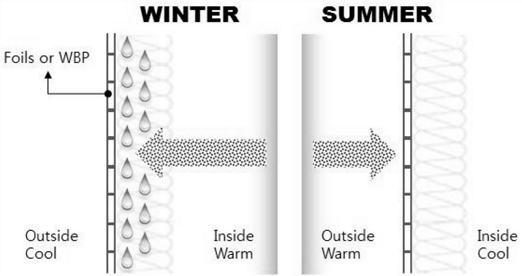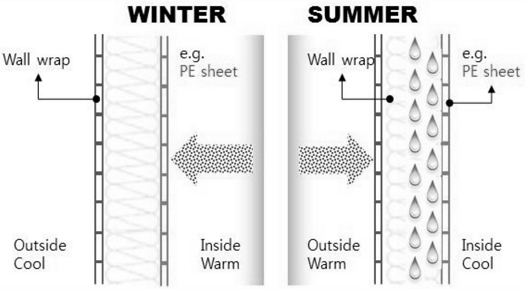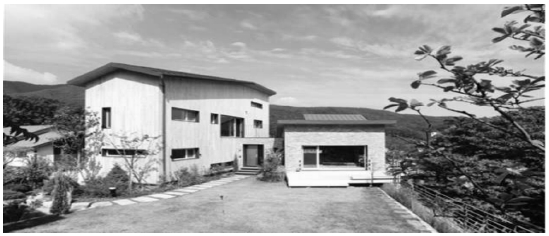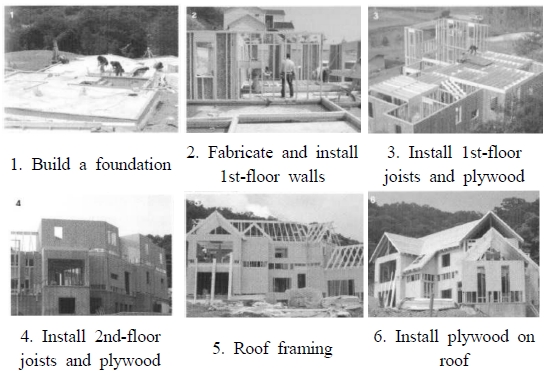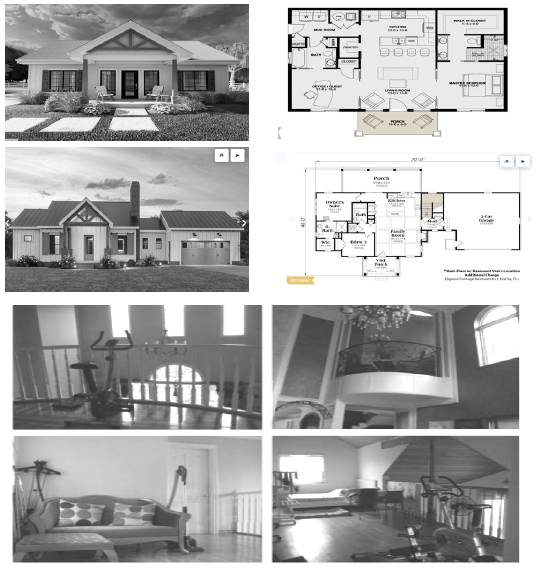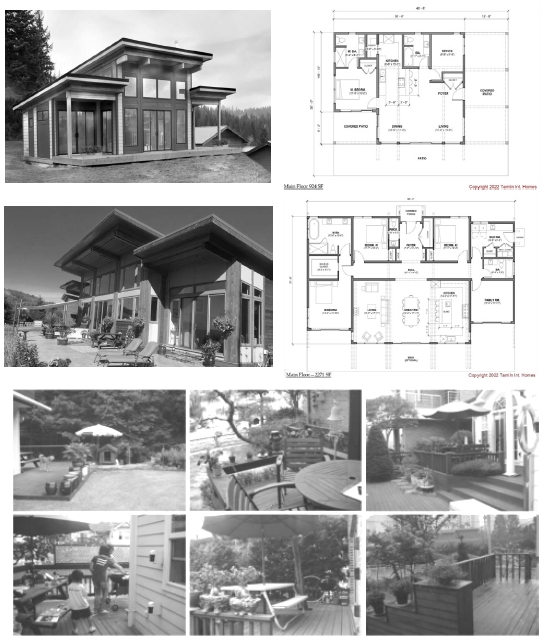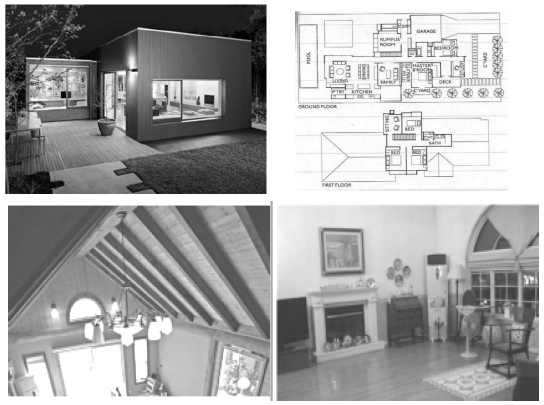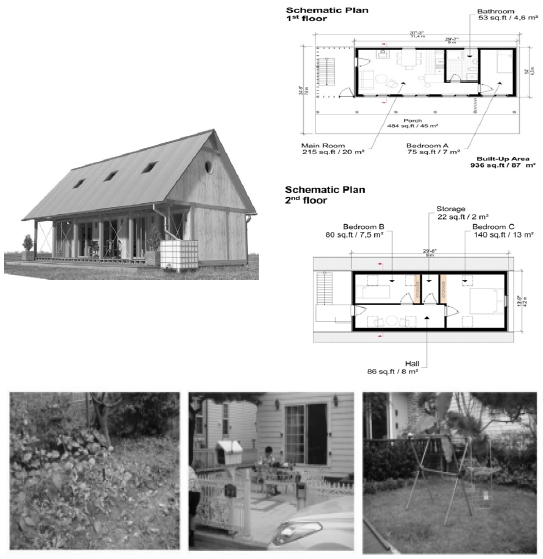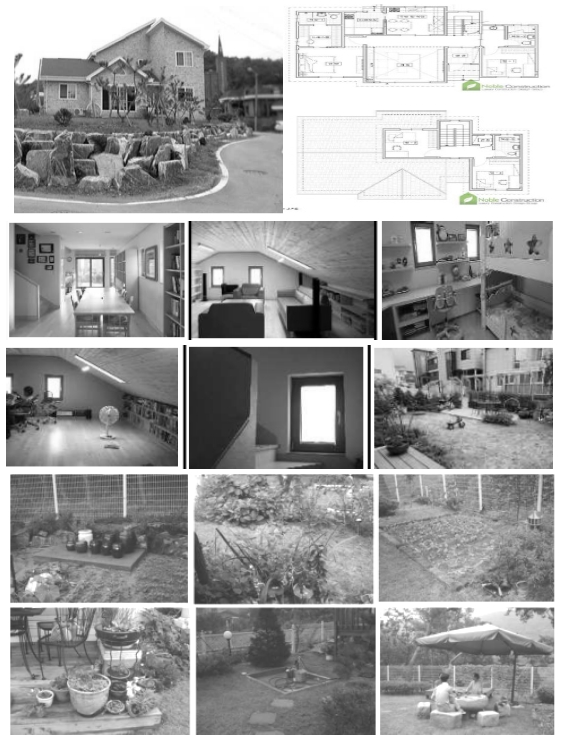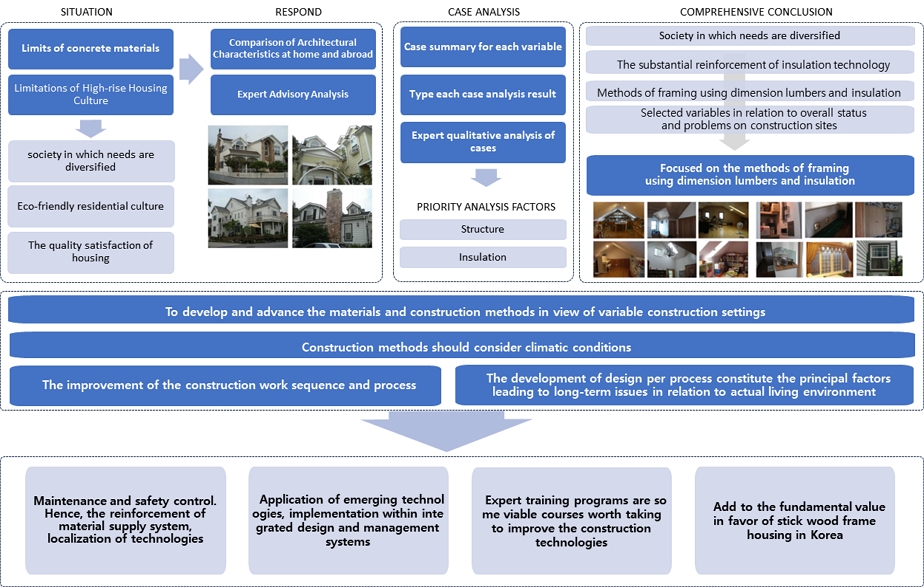
Viable Courses of Action for Advanced On-site Construction in View of Structural Types of Stick Wood Frame Houses in Korea and Overseas Countries : Focused on Characteristics of Stick Wood Frame House Construction Work by Country
ⓒ 2023. KIEAE all rights reserved.
Abstract
This study analyzed the current status and common problems of stick wood frame houses in some countries that have taken the initiative in adopting and developing the most advanced structural types of stick wood frame houses, in order to propose some viable courses of action to take the industry to the next level based on experts’ advice.
This study was intended to shed light on the current status of stick wood frame house development in Korea with a view to gaining insight into some viable courses of action for domestic industry and governments to take for further growth. Stick wood frame houses are favored as one of the structural types that meet the emerging trend of pursuing the quality of life using eco-friendly materials by establishing an eco-friendly construction industry on a national level. In Korea and overseas countries, stick wood frame house construction work has developed along with wood frame systems, varying with the climate, environment, culture and lifestyle of each country. This study selected such variables for analysis as the limitations in construction technologies, insulation and different conditions, which are the principal factors requiring some improvement and further development of materials and construction methods. Also, as the experts advised in reference to the findings, the sequence of construction methods, climatic conditions, process improvement, design development for each process, living environment, maintenance and safety control are the principal factors that manifest long-term issues.
In addition, the findings suggest the reinforcement of material supply management system, localization of technologies, application of emerging technologies, implementation within integrated design and management systems and expert training programs are some viable courses for Korean stick wood frame house industry to take in order to improve construction technologies and add to the fundamental value thereof.
Keywords:
Stick Wood Frame House, Structural Types, Characteristics of Construction Work, Living-Lab Pre-study, Field Case Study키워드:
경량목구조주택, 구조형태, 현장사례특성, 리빙랩사전연구, 사례연구1. Introduction
1.1. Background and Purpose of Study
As a super-aged society, Korea has been witnessing an increasing number of people showing interest in such housing options as facilitating an eco-friendly and healthy post-retirement life. According to recent statistics published by the Ministry of Land, Infrastructure and Transport, approximately 2.2 million wooden houses have been built in Korea and the demand for such houses is on the rise backed by the preference for a multifaceted value of life and eco-friendly environment[1]. Stick wood frame houses are unrivaled in that sustainable and renewable natural materials constitute a mainstream in the history of modern construction work, replacing the steel frame and concrete building materials (Chang et al., 2017, Kim, 2013, Pang et al., 2016), and also push the boundaries with their structural types leading the housing culture of utilizing eco-friendly materials via the establishment of the eco-friendly construction industry on a national level across the board and meeting the need of humanity for looking to improve the quality of life through pleasant, stable and eco-friendly housing agreeable to nature[2]. In that respect, stick wood frame houses as a stable eco-friendly energy-saving housing option need to be supplied and developed further to help people enjoy more humane residential lifestyle and to boost the quantifiable efficiency and economic feasibility of materials. Hence, this study investigated the characteristics of on-site construction in relation to the structural types of stick wood frame houses available in Korea and overseas countries, and analyzed some principal factors of the current development and the characteristics of stick wood frame house construction work in some countries that have taken the initiative in adopting such housing on a national level, ultimately to share insight into some viable courses of action for Korean stick wood frame house industry to take[3].
1.2. Previous Study
The scope and content of research on wood frame houses over the past three decades have mostly been limited to comparative studies on Korean versus overseas wood frame houses, traditional Korean wood frame house design, experimental studies on traditional Korean wood frame houses, and studies on testing the performance of wood frame houses in Europe, Japan and other advanced countries. Likewise, previous studies conducted over the past 10 years in Korea have largely dealt with enhancing the performance of stick frame construction rather than the practical needs and priorities in the field. In effect, it is hard to find comparative case studies shedding light on the historical, social and cultural aspects of wood frame houses in Canada, the U.S., New Zealand and Japan, given the practices of those countries have exerted the greatest impact on overall codes and technology related to Korean stick wood frame houses. Also, as discussed below in relation to previous studies, in-depth analysis is nonexistent of stick frame construction materials and insulation technology, which were selected by wood frame construction experts as the primary factors that should be analyzed in light of the issues arising from their adoption in Korea[16]. The previous studies discussed below should be noted in that they show the trend of relevant research over the past 3 decades since the first arrival of stick wood frame houses in Korea.
Seo(2000), in "An Ecological Approach to Research on Stick Wood Frame House Design," examined a residential house in Icheon Gyeonggido as a specific case of eco-friendly stick frame construction design, described research stages, raised questions, identified consistent design principles leading to regularity, indicated that design is a process of persistently seeking a dynamic balance for survival, and proposed that the parts and the whole system need be harmonized via complementary approaches.
Kim (2002), in "A Study on the Roof Construction Method of Traditional Wooden Architecture," focused on the roof construction method in modern stick frame construction of small-scale structures, compared traditional with modern wood frame architectures, and derived the characteristics of the traditional roof construction method based on empirical and intuitive knowledge about vertical loads.
Ahn (2007), in "A Study on Sekisui House‘s Wood-based Home Production and Technology," investigated the production system and technology for wood-based prefab 'SHAWOOD' homes by Seisuki House newly founded in 2004 in Japan, where a range of wooden house construction methods are available, e.g. wood-based prefabs, stick wood frame houses and traditional wood frame products.
Lee (2017), in "A Study on Hygrothermal Behavior of Envelope of Light Wooden Passive House," empirically demonstrated the air tightness of low-energy houses where the insulation performance of stick frame construction was reinforced for energy saving, analyzed the hygrothermal performance of the envelope for stick frame construction to rectify the detrimental effects of increasing loads of insulation materials on indoor space, and suggested the weather resistant envelope, particularly the walls for stick frame construction, should be developed, implemented and improved in Korea.
1.3. Method and Scope of Study
Previous studies conducted over the past two decades on stick wood frame houses in Korea were focused on the comparative analyses of stick wood frame houses versus traditional wooden houses and the experimental approaches to each stage, design and environmental performance of stick wood frame house construction work. Hence, it is hard to find any study that has analyzed the overall conditions and issues related to stick wood frame house construction work at home and abroad since the latter half of 2000 when such houses were first introduced and built in Korea[3]. In that regard, this study examined the structural types of stick wood frame houses in Korea and overseas countries and comparatively analyzed the characteristics and cases of early stick wood frame house construction work in Korea, the U.S., Canada, New Zealand and Japan in order of the construction methods adopted since 2008 by visiting the sites and gathering some advice from experts. Also, since it was challenging to analyze all the characteristics of on-site stick wood frame house construction work, two owner builders who had lived in their stick wood frame houses for over 10 years and two experts were asked in the early stage of this study from June to August 2023 to examine the analysis findings of this study and to suggest some viable courses of action for further development of the industry. Revolving around the methods of building the structural foundation, insulation and heating, which are the distinct factors among different structural types of stick wood frame houses, the variables for analysis were chosen from the perspective of builders or constructors.[4] Moreover, given the relationship between the architectural characteristics of stick wood frame houses and the cases of construction work would exert effects on on-site work, this study makes some suggestions based on the experts’comments in reference to the analysis findings by country.
2. Relevant Concepts
2.1. Stick Wood Frame House
Stick wood frame houses are the houses built with relatively affordable framing lumbers mass-produced from standardized square lumbers of small cross-section sizes used in the stick frame construction developed in the U.S. The light-weight materials facilitate the construction work, minimizing the construction period and labor costs. Stick wood frame houses are predominantly characterized by low heat conductivity, high energy efficiency and design flexibility. In this study, the stick wood frame houses refer to the cases of applying the structural types of the stick frame construction work in Korea and overseas countries with no classification of specific construction methods of stick wood frame houses[4].
Stick wood frame houses are basically composed of construction work and mostly dimension lumber and engineered wood as well as plywood materials. Firstly, as for the dimension lumber, since there are many coniferous forests in North America, they naturally have used conifer wood, mostly SPF(Spruce-Pine-Fir) species, in the U.S., and lately the engineered wood manufactured from chemically treated and processed timber have been used for large-scale structures in stick frame construction.[10] Also, engineered wood is made by crushing the tissues of lumber and putting together those crushed tissues as in PSL (parallel strand lumber), which is manufactured by compressing strands of wood below certain thickness levels. PSL (parallel strand lumber), LVL(laminated veneer lumber), TJI(I-joist) and Glulam are preferred engineered wood products that are less prone to warping and deformation and easier to care and process. More recently, structural glued CLT (cross laminated timber) panels are widely used particularly for high-rise buildings as those products are strengthened by compressing and gluing mutiple layers of wood boards perpendicularly to each other to sustain heavier weights than concrete and resist warping and twisting unlike glued laminated wood products Additionally, such plywood products as OSB (oriented strand board) are mostly used for exterior work since they are made with waterproofing materials and phenol resin adhesives excluding those products whose safety is verified under the predefined production standards[4].
In stick frame construction in North America and Canada, the stability of structures and the comfort of buildings are analyzed by considering the humidity and heat in those countries. In Korea, stick wood frame houses use the same construction methods and materials as those used in North America and Europe. Still, given the different weather conditions of Korea from those of overseas countries, it is crucial to analyze the materials and construction methods to make sure they are suitable for the climate of Korea.2) Therefore, in-depth hygrothermal analysis need to be conducted beforehand in view of Korean climatic conditions characterized by cold and dry winter and hot and humid summer.
Technically, the stick frame construction is the dry construction. First conceived by a Chicagoan timber dealer and engineer Snow in 1830, the modular stick frame construction uses only narrow cross-sectional square lumber and involves the balloon framing using narrow cross-sectional studs and joist rafters and the platform framing which addresses such challenges of the balloon framing as lower resistance to fire and awkwardly long studs. In the balloon framing, it is relatively easy to work with short and light framing lumbers, to increase the stiffness of the frame assembled upon a level platform and to save time and labor that would otherwise be put into installing fire-resistant boards thanks to the fire-resistant curtains of the platform[5]. Also, in Korea, since the advent of ‘The CLT HOUSE’ in 2017, the CLT framing construction methods involving CLT framing lumbers and joints and strength and performance testing[5] have been developed and applied to three- or multi-story stick wood frame houses[6].
In Korea, the number of stick wood frame houses began to rise sharply in 2006, when the government had a North American-style stick wood frame house complex built in Ilsan New Town in the late 1990s. Also, according to Statistics Korea, about 15,000+ wooden houses were built in 2016. Around 2010 specialized construction technology and training programs began to be systematized[7]. However, the stick wood frame house construction sites have not changed significantly in practice in comparison to the demand for more than 10 years until now, which seems attributable to the misunderstanding of the structural performance of stick wood frame houses and such secondary problems as poor air-tightness, insulation, condensation and mold.
The framing lumbers for stick wood frame houses are standardized by the timber species, dryness and grade. The nominal and actual sizes are as follows. Stick wood frame houses use 2x4 = 38x140mm dimension lumber for an exterior wall, whose total thickness is as thin as approx. 180mm including the standard internal insulation and finishing. The Korean Design Standard for buildings comprises eight chapters: General Principles, Structural Testing, Design Loads, Foundation Structure, Concrete Structure, Masonry Structure, Steel Structure and Wood Frame Structure. The Ministry of Land, Infrastructure and Transport promulgated the Korean Building Code, not a building design code, in order to develop comprehensive regulations on the safety of buildings and the design related to buildings, and enforced the Korean Building Code (KBC) in 2009, which was in turn revised in 2016. Under the revised code, the eight sections in Chapter 8 deals with the stick frame construction for stick wood frame houses: general information, materials and allowable stress, design requirements, member design, joint design, traditional stick frame construction, light-weight frame construction, durability planning and construction methods, and fire-resistance design.
Stick Wood Frame House construction work follows the process described Fig. 4.[4]. Stick wood frame houses vary partially depending on construction methods but the general sequence of on-site construction work process is as follows: leveling the ground followed by foundation work with concrete, framing work where factory-manufactured wood materials are installed on site, exterior wall work where waterproofing paper is applied to the wooden exterior walls and electrical equipment is installed while windows are installed, roofing work, floor ondol heating work while the floor mortar hardens, insulation work and interior finishing work. Fig. 4. illustrates the foregoing process of stick wood frame house construction work.
The variables for the present case analysis were derived from previous studies and the preliminary survey with two owner builders who had lived in their stick wood frame houses for more than 10 years since 2008 and two experts[8].
The priorities to be considered in light of the structural types in stick wood frame house construction work are: humidity control and insulation in interior environment; yards and decks in exterior environment; ventilation and sound insulation in interior environment; exterior design in exterior environment; fire resistance in home safety; and construction technology in maintenance[9].
However, in addition to the general and common aspects, the basic construction methods of structures, insulation and heating were derived in this study as the main characteristics and factors to be considered in relation to the construction experience and grievances depending on the structural types of stick wood frame houses in each country[10]. Also, the analysis findings on the effects expected on supplier and client sides of stick wood frame houses are shown in the table above[11].
3. Case Analysis
The structural types of stick wood frame houses at home and abroad were considered in this study to analyze the characteristics of on-site construction work by country[12] based on the data gathered from national conferences and experts’field analysis conducted for 15 years from 2008 to 2023 within the aforementioned analysis framework. The cases of stick wood frame house construction technologies adopted in Korea since their early days were compared with those in the US, Japan, Canada and New Zealand so as to shed light on the status of stick wood frame houses in Korea and propose some viable courses of action for further development of the industry. Also, based on the experts’ comments collected for two months from June 2023, this study selected and analyzed the most urgent on-site construction issues and discussed the findings to gain insight into improvements.
Also, Based on semi-structured previous studies, the author of this study informed wood frame house conferences, academic societies, constructors and architects of the necessity and purpose of this study to seek 6 expert teams advice. After confirming the request for cooperation via phone calls and emails to interviewees, the author presented interviewees with open-ended questions based on the literature review and analyzed their final responses. Interviews were recorded following the informed consent of interviewees. On-site interviews were reinforced with notes in daily logs and follow-up emails.
As described below, since the first arrival of stick wood frame houses in Korea, relevant policy, codes and standardized models have adopted those of North America and Europe in the early days. Then, advanced cases of the U.S., Canada, Australia, New Zealand and Japan have been cited most frequently. Lately, as stick wood frame houses are regarded as viable options for greenhouse gas reduction and energy savings, research efforts have been made to enhance the performance of stick frame construction and develop energy saving component technology from North America and Europe, new materials, stricter policy and design codes reflecting Asian climate and culture. In order of adoption in Korea, this study described overall history, culture and environment surrounding typical domestic and overseas stick frame construction, illuminated the trend, change and issues, and analyzed relevant factors required for stick wood frame houses to settle and evolve in Korea. The analysis highlighted the following.
3.1. Stick Wood Frame Houses in the U.S.
In the U.S., stick wood frame houses have made great strides by virtue of the balloon framing in stick frame construction following the adoption of the 16th-century European construction methods. In the United States, more than 90% of the houses are stick wood frame houses, whose exterior walls are finished with various materials, e. g. brick, stone and cement siding. Thanks to the large area of the country, even affordable housing has a minimum floor area of 40 to 60㎡, and the main difference between upper-class and lower-class housing lies in the size and presence of garages and gardens. In the United States, the popular balloon framing has continued to develop until the present day, becoming a popular construction method in the country and spreading as a construction method that is more rational than simple structures that support the buildings and can also be used as a partition for floors, walls and ceilings.
Later on, in the West, it was transformed and developed into the American stucco influenced by the large influx of Mexican-style housing during the Spanish colonization. The high labor and material costs led to the constant search for ways to simplify the house construction work process and shorten the construction period, which has laid the foundation for the stick frame construction among others that allows the faster and more cost-effective on-site assembly, installation and construction work and that steadily develops despite the unfavorable conditions in the US society.
3.2. Stick Wood Frame Houses in Canada
In Canada stick wood frame houses have developed continuously to resist the intense cold reaching –30℃ and heavy rain and withstand different weather conditions across regions. Notably, the country’s timber industry, fields, universities and government agencies have organized the systems since the early days to make R&D efforts for wooden houses[13], improve applicable regulations and revise building codes involving the standards for materials and heating work.
Mostly, 2X6 and 2X4 are used for exterior and interior walls of houses, respectively, in Canada. Standards exist for insulation materials installed in 2X6 walls, whereas insulation materials are not installed in the inner walls. The 2X6 exterior walls are completely sealed, and I-Joist has long been used widely for floor joints to save raw materials and take advantage of its high strength. As for roofing, the bird’s mouth cut into rafters is mostly used for expansive suburban high-end houses or summer houses in Canada, while the truss structure is used for relatively affordable houses. Also, the roof framing work takes about a couple of days. With the truss structure used widely, the number of its suppliers has increased a lot. The computer-aided design of truss products manufactured in factories adds to the efficiency of on-site installation.
Canada’s stick wood frame houses comprise detached houses(67%), apartment houses(31%) and mobile homes (2%), which shows the greater preference for detached houses. In Canada, quite a few deteriorated houses need renovating and repairing. Also, the average size of a house in Canada is 116.8㎡, much larger than 76㎡ in Korea. The quality of insulation and airtightness of housing is good.
3.3. Stick Wood Frame Houses in New Zealand
In New Zealand, over 80% of all houses are stick wood frame houses. Since 2008 New Zealand’s largest stick wood frame housing company has developed housing complexes, where each house mostly has a lot area of 400~500㎡ and a building area of 200㎡. With an influx of immigrants, many people rush to move into their homes in two weeks ~ one month following the completion of construction work, which is why they prefer stick wood frame houses customized by volume builders rather than self-build custom designed homes. Also, since 2010 New Zealand has increased safety inspections from 3~4 steps to more than 12~14 steps from start to end of construction work, causing people to opt out of self-build or custom designed homes.
Due to New Zealand’s climatic conditions, it is crucial to adopt the construction methods resilient to earthquakes, various wind directions and strong air flows, which is why the country applies the same building code as Australia’s and adopts the production system and methods that are highly comparable to those of the eastern part of Australia.
Stick wood frame houses in New Zealand and Australia used to use double brick walls similar to those in the UK. Now, the brick veneer wall construction method is widely used with bricks laid on outer walls and wood framing on inner walls. The wood framing used in these countries is different from that used in North America, and their overall construction work process is similar to that of the U.K. Instead of soil, Styrofoam is installed in the foundation, where it is laid on the ground and floated 5 centimeters above the ground followed by wire mesh work and concrete pouring, to enhance the resistance to earthquakes. In general, houses in New Zealand and Australia have no basements because of the lot areas large enough to accommodate separate boiler rooms or store rooms, and high construction work and labor costs. Instead, they opt to focus on water-proofing, earthquake-resistant design and maintenance and save the costs by not installing the basements.
3.4. Stick Wood Frame Houses in Japan
The types of stick wood frame houses in Japan have rapidly changed following the country’s industrialization. Accounting for approximately 50% of residential housing in Japan, the 2x4 stick wood frame house construction method was imported from North America, while simultaneously Japanese architects have set forth the standards and regulations relevant to affordable housing issues and supplies and constantly developed national building codes by continually examining and experimenting a range of options including minimal housing, dimension housing, national housing and standard housing.
Owing to the country’s seismic hazards, they have tightened the codes on resistance to earthquakes and fire events. Mostly, modern houses in Japan were wooden houses built. The change in residential housing in Japan has laid the foundation for implementing the industrialized housing in the country’s record period of economic growth since the 1960s.
3.5. Stick Wood Frame Houses in Korea
Stick wood frame houses first landed in Korea in the early 1990s. In 1990, American Forest & Paper Association(AF&PA) launched an office in Seoul to transfer American materials and technology, initiating the construction work of stick wood frame houses. In the early days of stick wood frame housing in Korea, the 2x4 = 38x89mm(thinner than current exterior walls by approx. 50mm) dimension lumber was used for wall framing to build the houses.
Yet, as aforementioned regarding the characteristics of Korean stick wood frame house construction work, Korea mostly uses American and Canadian technologies, leaving much to be desired in the development of framing lumbers, experimentation of materials and arrangement of construction technology proposals suitable for local weather conditions or culture. Also, since the early 2000 up to the present, no substantial construction technology development has been made. Against the backdrop of the low carbon green growth policy called ‘2 million green homes’ which involves the stick wood frame houses for the eco-friendly materials and the increasing preference for eco-friendly and healthy houses, Korea’s own construction technology needs to be established in addition to the adoption of technologies from advanced countries, specialized skill training programs and government support.
4. Results and Viable Courses of Action for Further Development
On the side of stick wood frame house suppliers or constructors, the initial management of standardized materials and the construction work steps were found as the components that should be improved first, considering the structural types of wooden houses. The most differentiated factor in comparison to overseas cases was found to be the substantial reinforcement of insulation technology for stick wood frame houses. Focused on the methods of framing using dimension lumbers and insulation, this study analyzed the selected variables in relation to overall status and problems on construction sites.
As the present findings suggest within the scope of the selected variables, there are limitations in improving the foundation work and applying the characteristic insulation of each country to local stick wood frame houses. These findings indicate it is essential to develop and advance the materials and construction methods in view of variable construction settings. Also, as the experts commented in reference to the present findings, construction methods should consider climatic conditions, and the improvement of the construction work sequence and process and the development of design per process constitute the principal factors leading to long-term issues in relation to actual living environment, maintenance and safety control. Hence, the reinforcement of material supply system, localization of technologies, application of emerging technologies, implementation within integrated design and management systems and expert training programs are some viable courses worth taking to improve the construction technologies and add to the fundamental value in favor of stick wood frame housing in Korea. In short, the following courses applicable to the industry were derived from the present analysis of the current status and characteristics of stick wood frame housing development.
The cases of advanced countries, i.e. the U.S., Canada, New Zealand and Japan, are characterized by centuries-long development and history of stick wood frame houses, by means of which they have developed and applied the construction methods suitable for local environment and culture, and revised systematic and unified guidelines appropriate for local environment, while stabilizing the systems within the boundary of their institutional capacities. That said, the use of locally-sourced materials as well as the use of materials in accordance with climatic conditions, which did not cause any substantial issues in the U.S. and Canada, has resulted in dampness, sound insulation and other insulation issues in Europe and Asia, causing quite a lot of stress and discomfort in terms of residents’ health, safety and lifestyle, which has been manifested in the limitations of the properties of materials and the construction work issues contributing to the declining value and preference for stick wood frame houses despite aforementioned advantages thereof. However, the present findings suggest that the on-site construction considering the inherent properties of materials and the insulation can be improved to meet the demand on a national level via material management, improvement of construction methods and standardization of subsidiary materials.
Unlike American and Canadian cases characterized by the rapid advancement owing to persistent technology development and abundant supply, Korean stick wood frame housing has still done nothing but importing advanced technologies from overseas countries in response to the local operation of overseas businesses and the resultant increase in demand, lacking in the development of localized stick wood frame house construction technology, arrangement of systematized national guidelines and localized product development. The experts’ comments highlight the following courses of action worth taking to reinforce the framing lumbers and construction methods on stick wood frame house construction sites in Korea and thereby improve the construction environment.
5. Conclusion
Stick wood frame houses in Korea are still influenced by quite a few North American and Canadian elements. In particular, as in the cases of the U.S., Canada, New Zealand and Japan, it is crucial to continuously develop and apply construction methods compatible with Korean climate and environment, and standardize and revise the guidelines for each area to stabilize the system. Given the environment and history of stick frame construction in Japan substantially parallel those in Korea, the notifications promulgated by the Ministry of Construction in Japan have shifted the paradigm in the development of codes and new construction methods relevant to earthquake-proof and insulation features. Subsequently, instead of focusing on promotional campaigns, dispatching manpower to Canada for skill training, and other skill programs for technicians in stick wood frame house industry, the Japanese government has turned its attention to multifaceted occupants’ desires and reasonable needs and led the expansion of the industry for the benefit of job opportunities, growth of related industries and sustainable development, which are applicable to Korea. In addition, the analysis found once the expansion and diversification of the technology and supply chain involving constructors and consumers brings higher quality and wider choices, the advantages of stick wood frame houses will double over concrete and other types of houses in terms of maintenance and repairs.
Considering the structural types of Korean and overseas stick wood frame houses, the construction work environment has developed on the basis of the climate, environment, culture and lifestyle of each county and its people. Also, the improvement and advancement of materials and construction methods are necessarily differentiated, mirroring the differences in the principal factors. As advised by the experts, the improvement and advancement on stick wood frame house construction sites boil down to the appreciation of the attitude of providing homes for residents to live in. Also, they suggested the systematic application of the principal factors that could possibly manifest long-term problems, i.e. actual living environment, maintenance and safety control as well as development of materials, construction methods and design, in addition to the cases of developed countries. That is, the partial improvement of current on-site construction technologies and the usual passive responses would result in repetitive trial and error and limitations, given the current conditions of stick wood frame housing in Korea. Based on such alternative options as advised by the experts who participated in this study, i.e. reinforcement of material supply management system, localization of technology, application of emerging technologies, implementation within integrated design and management systems and expert training programs, the following courses of action should be taken to rectify the problems on construction sites with policy improvements, so as to improve the actual living environment of stick wood frame houses for residents and add to the fundamental value thereof.
First, it is necessary to explore diverse types of urban housing schemes, not just to develop small-scale detaching housing projects which various local residents are accustomed to and prefer. Second, the supply of urban housing considering Korea’s cultural, environmental and geographical characteristics would contribute to the extended supply of stick wood frame houses in suburban areas. Third, given that it has been more than 30 years since the arrival of stick wood frame houses, it is necessary to adopt advanced technologies, develop technologies and skills, analyze the differences in geography, climate, culture and consumption from those in overseas countries and their changing trends, and develop applicable construction guidelines and standards for ondol heating, wet piping systems and sound insulation in light of Korean culture, living environment and emotional aspects resulting from the changing and aging population based on Korean building systems and codes. Fourth, since the adoption of stick wood frame houses in Korea, research data and technological development have left much to be desired. It is crucial to develop technologies on a national level and also provide training programs for stick wood frame house experts in the field. As found in overseas cases, the stable material supply chain management, systematic labeling of quality and performance of materials, precise supervision of material processing and construction work, diversification of design, noise insulation reinforcement between floors and between walls, fire and emergency preparedness and response for a growing number of seniors, and most importantly heating and leakage technologies responsive to climate change should be extensively improved by reinforcing the structural engineering and construction technologies for stick wood frame houses and by providing a range of experts with training programs relevant to supporting technologies to further the supply and adoption of quality eco-friendly stick wood frame houses[5].
Overall, it is imperative to improve and develop the stick wood frame house construction technologies using sustainable and eco-friendly natural materials replacing the concrete building materials in consideration of the living environment and value of home owners and residents. Given the uneasiness and concerns over stick wood frame houses, further studies should be conducted by taking into account the experts’ advice, so that stick wood frame houses will be widely adopted in Korea as a safe, healthy and sensitive global housing option embracing Korea’s unique housing culture and standards for value preferences.
Notes
References
- American Society for Testing and Materials, Wood, Philadelphia, 4(09), 1986.
- Hirano, S, Test of a Japanese post and beam wooden house I. dynamic performance and damage of a wooden house excited by real and simulated sismic motions. Journal-Japan Wood Rearch Society, 49(2), 2003.
-
장수정, 박소임, 초고령사회 지역사회 공동체 강화를 통한 한국형 블루존(Blue-zone)구축 전략 고찰, KIEAE Journal, 제21권 제2호, 2021.11 pp.114-115.
S.J. Chang, S.I. Park, A study on strategies for building blue zone by strengthening communities in a super-aged society, KIEAE Journal, 21(2), 2021.11, pp.114-115. -
박소임, 경량목조주택의 거주실태에 관한 사례연구, 연세대학교 석사학위논문, 2012.
S.I. Park, Case study on the living condition of wood-frame house -Focused on actual conditions and responses of residents, Korea: Yonsei University, 2012. -
유지원, 단열 성능 향상을 위한 CLT 기반 목조 주택의 열수 및 에너지 성능 평가, 연세대학교 석사학위논문, 2020.
J.W. Yoo, Hygrothermal and energy performance of CLT-based wooden house to improve thermal insulation performance, the Department of Architecture and Architectural Engineering and the Graduate School of Yonsei University, 2020. -
이동진, 김동훈, 전원형 목조주택 건축계획에 관한 연구 -캐나다 수퍼-E®하우스 기술요건을 중심으로-, 한국실내디자인학회 학술대회 논문집, 2017.5, pp.191-195.
D.J. Lee, D.H. Kim, A study on the design method in the country wooden house - Focus on the technical requirements of Super-E® House, Proceedings of the Annual Conference of Korean Institute of Interior Design, 2017.5, pp.191-195. - A. Polensek, K. M. Bastendorff, Damping in nailed joints of light-frame wood building, Wood Fiber Sci, 19(2), 1987.
-
D. V. Rosowsky, Moving toward performance-based engineering of wood-frame housing: A fragility analysis methodology, Proceedings of the Annual Conference on Durability, 128(1), 2002.
[https://doi.org/10.1061/(ASCE)0733-9445(2002)128:1(32)]

- S. L. Quarles, K. A. Flynn, Performance of wood and wood-based materials in multi-family housing: Issues from a California perspective, Proceedings of the Annual Conference on Durability and Disaster Mitigration in Wood Frame Housing, 2, 2000, pp.3-10.
-
전영진, 김영훈, 목조 건축물의 곡선형 지붕 적용현황 분석, KIEAE Journal, 제21권 제1호, 2021.
Y.J. Jeon, Y.H. Kim, Analysis of the application status of curved roofs in wooden buildings, KIEAE Journal, 21(1), 2021, pp.26-27. -
김영훈, 이지예, 일본 교육시설에 나타난 전통 목재 및 목구조 적용 방법 분석, KIEAE Journal, 제19권 제1호, 2019.
Y.H. Lee, J.Y. Lee, The traditional wooden and wooden application method analysis appeared to Japanese educational facilities, KIEAE Journal, 19(1), 2019, pp.53-61. [ https://doi.org/10.12813/kieae.2019.19.1.053 ]
- American Best House Plans, https://www.houseplans.net, , 2023.10.21.
- Canada Wood Korea, http:/www.canadawood.or.kr, , 2023.8.16.
- Timlini International Homes, https://tamlintimberframehomes.com, , 2023.11.23.
